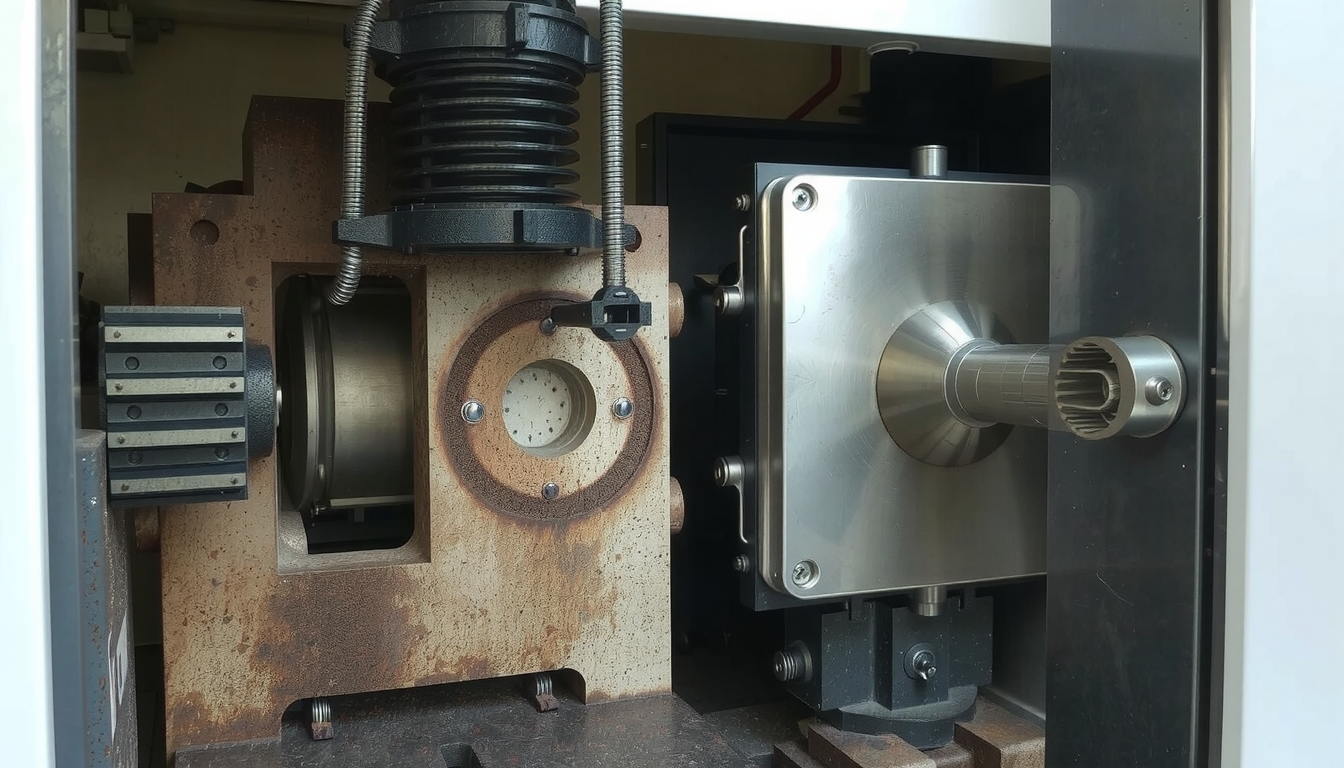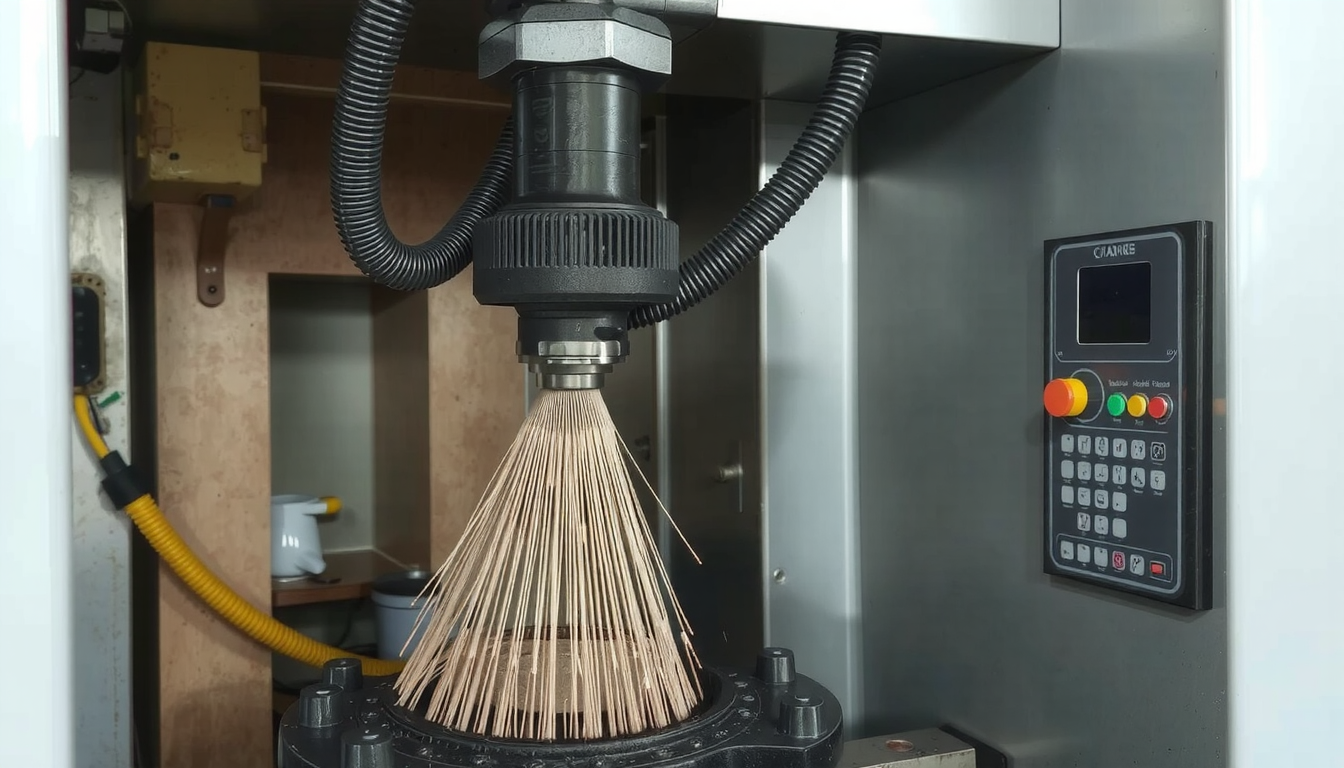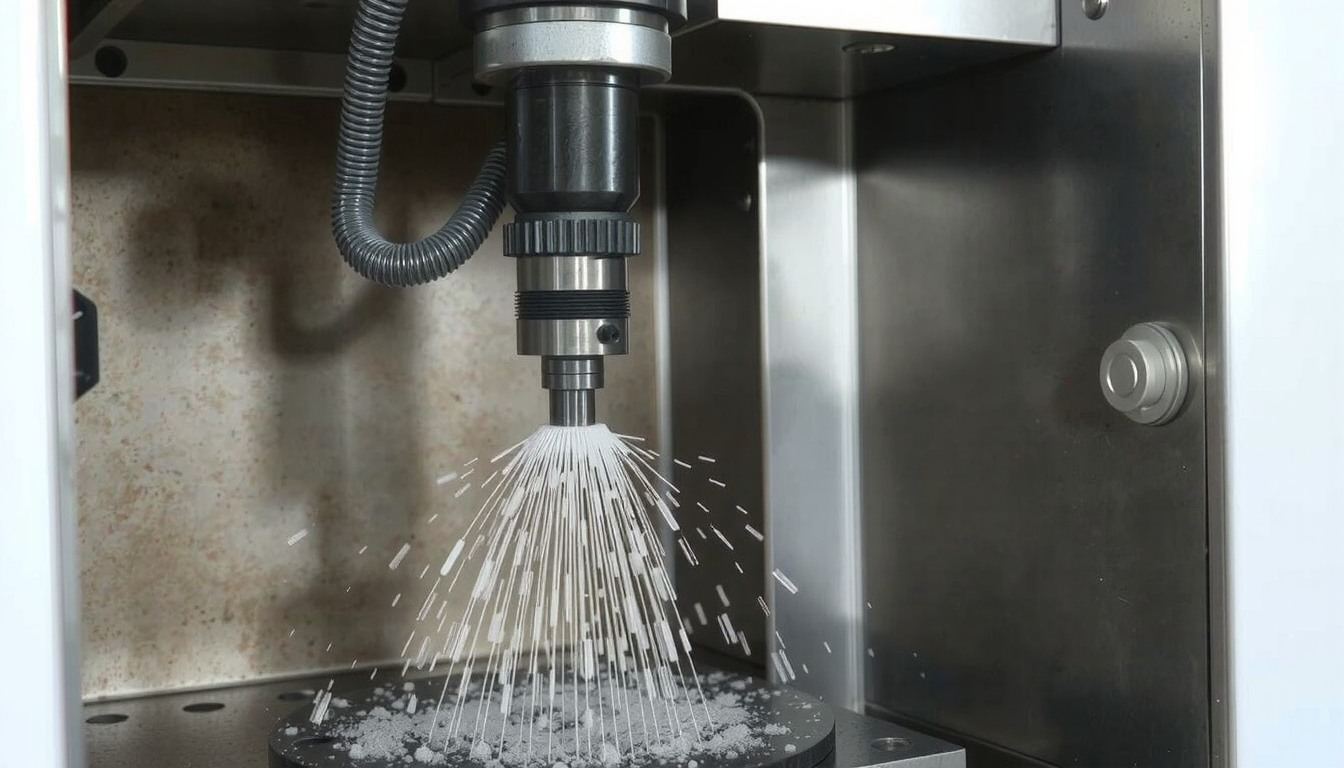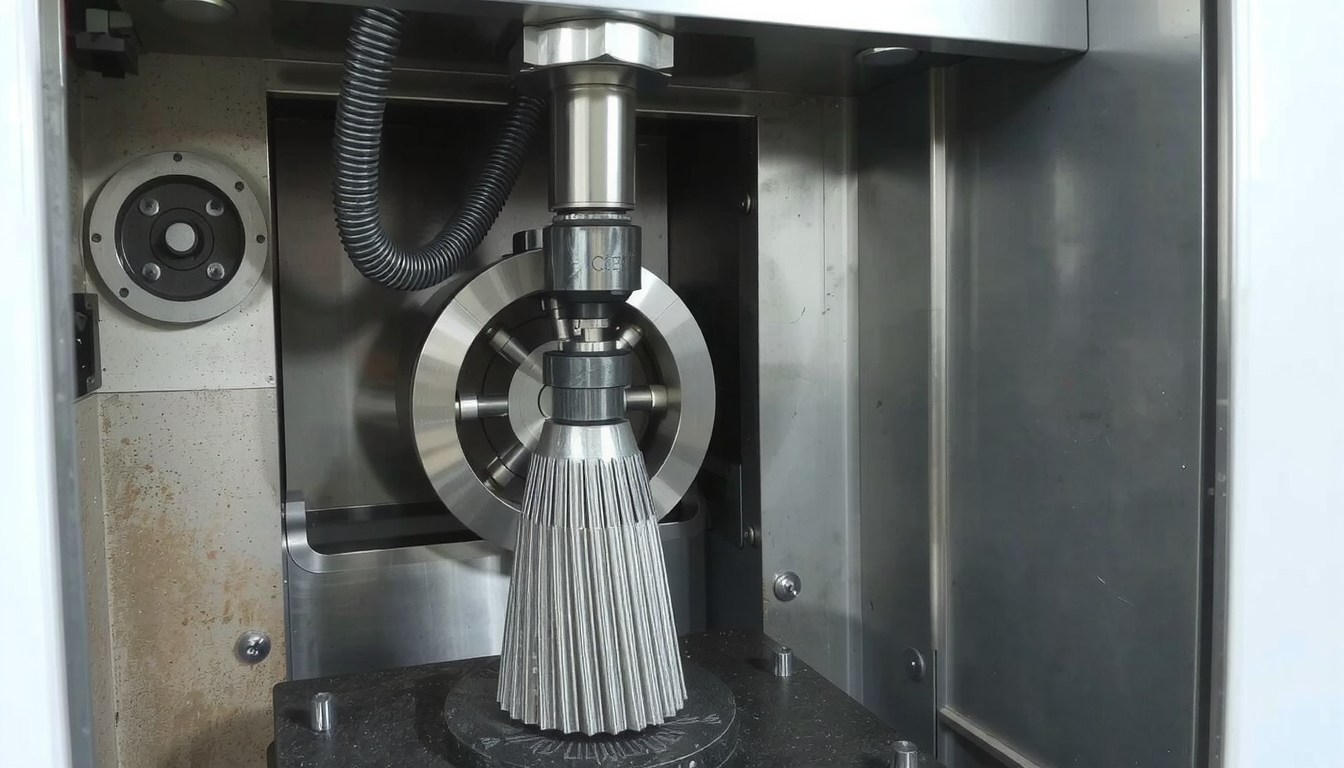Main Contrast: What Spins?

The substantial difference separating CNC milling and turning is the part that moves. In CNC turning, the part undergoes rotation. However, in the case of CNC milling, the cutting tool turns while the part remains still. Having this basic concept in mind is critical for you to determine the preferred method for your component.
Envision turning as a potter’s wheel. The potter holds a tool still to shape the spinning clay. Milling is more like a sculptor whose tool moves to carve a block that does not move. The workpiece and tooling motion is the factor that controls the entire process of machining.
This guide will explain each process. We will make side-by-side comparisons of them and provide you with a comfortable methodology for choosing between them. Additionally, we will highlight smart machines that incorporate both turning and milling processes.
The Processes: Defining CNC Turning
CNC turning is a process that uses a machine called a CNC lathe to create a piece or a workpiece of a circular shape. This process is most suitable for parts that are cylindrical and have a median axis.
The Processes: CNC Lathe Overview
The turning process utilizes a cylindrical rod of material that is securely held in a chuck. The chuck rotates the part at high speed. A stationary cutting tool is placed on a turret.
The machine moves this cutting tool along the spinning part. It operates on two or more axes. The X-axis shifts in and out. The Z-axis moves left and right. As a result, the tool cuts away material and creates the desired shape.
Common Tasks and Created Shapes
You can use turning for making simple geometric solids such as a cylinder or a cone. The operations done will influence what the final workpiece looks like. For top-quality round components, specific must be acquired.
Common turning jobs are:
* Facing: Making a flat face on the end of the part.
* Contouring: Shaping the outside profile of the part.
* Grooving: Cutting a channel into the part.
* Threading: Making external or internal screw threads.
* Drilling: Making a hole along the center of the part.
This process is perfect for parts such as shafts, pins, rings, nozzles, and custom bolts.

The Processes: What is CNC Milling?
CNC milling is a multipurpose process capable of producing a wide range of parts, including intricate designs where all faces are not the same. It has various advantages compared to the CNC lathe, which means that it can perform operations on different shapes.
The Processes: CNC Milling Overview
In milling, the part is held still on the machine’s bed. Attached to a spindle is a cutting tool that is designed with multiple cutting edges, such as an end mill. The machine moves this spinning tool along the part to remove material.
CNC mills can operate on multiple axes. A basic 3-axis mill moves the tool in the X, Y, and Z directions. A more complicated 5-axis machine can also rotate both the tool and the part, allowing for complex shapes to be made.
Common Tasks and Created Shapes
Milling is a typical way to add features on a part that is often square or rectangular, but it can also create odd shapes. It is great for making flat surfaces and complex curves.
Some common milling jobs are:
* Face Milling: Making a large, flat surface.
* Pocketing: Cutting a cavity or pocket into the part.
* Slotting: Cutting a narrow channel or slot.
* Drilling: Making holes at any spot on the part.
* Tapping: Making internal threads in a hole.
Examples of parts that are machined by milling processes are engine blocks, electronic enclosures, and custom brackets.
CNC Milling vs. Turning: Side-by-Side Analysis
Both processes are material removal techniques, but what is the difference between cnc milling and turning comes down to several core aspects. The decision depends on the final surface contour of the part. We can directly compare both of the CNC turning and milling operations.
| Característica | Torneado CNC | Fresado CNC |
|---|---|---|
| Core Mechanic | Workpiece rotates, tool is stationary. | Tool rotates, workpiece is stationary. |
| Primary Machine | Lathe or Turning Center. | Mill or Machining Center. |
| Herramientas | Single-point cutting tools. | Multi-point cutting tools (end mills, face mills). |
| Geometría de la pieza | Best for cylindrical or axially-symmetric parts. | Best for flat, prismatic, or complex/freeform shapes. |
| Material Removal | Generally faster for roughing round parts. | More versatile, can be slower depending on part complexity. |
| Acabado superficial | Excellent finishes on round surfaces. | Can leave tool marks (scalloping) that may need extra finishing. |
| Complejidad de la instalación | Generally simpler and faster for basic round parts. | Can be more complex, especially for 5-axis work and fixturing. |

The basic finding is that when a component essentially has a round shape, then turning is the most direct and effective process. If the component takes a different shape or has extra features on several locations, then milling is the better option.
How to Choose: A Simple Decision-Making Guide
Navigating the differences between CNC milling and turning can be a simple task when you ask the right questions. This guide will assist you in finding the best process for your project. The initial stage is understanding what is the difference between cnc milling and turning.
-
Start with Shape: The first thing that you need to consider is the overall form of your part. Is it almost circular, for example, a shaft or a pin? If yes, you want to primarily focus on turning. If the part is either square, rectangular, or has a shape that is not the same on all sides, then you have to concentrate on milling first. This is a patently important factor.
-
Look at Feature Complexity: Secondly, look at the features on the part. Does your round part need features that are not on its center line, for example, off-center holes, slots, or flat faces? If so, your part will likely need milling as a secondary step after turning.
-
Think About Production Volume & Speed: What is the required quantity of parts? For high volumes of simple round parts, CNC turning is often faster and cheaper. For a single prototype or a small batch of complex parts, the flexibility of a CNC mill is often the preferred solution.
-
Check Tolerances and Finish: How precise do you need it to be? Both processes can achieve tight tolerances, for example, ±0.001″ (0.025mm) or better. However, the methods of attaining that perfection are not the same. Turning is excellent when you have to control the diameter and roundness of a part. Milling works better when locating features accurately on flat surfaces.
Real-World Uses & When to Use Both
From our experience as a manufacturing partner, many parts are not a simple “milling vs. turning” choice. Often, the most complex and useful parts need both processes.
A Simple Case Study: Making a Bicycle Hub
A bicycle hub is a great example of a part that needs both turning and milling.
The Hub Shell (Body): We start with a solid cylinder of aluminum. We use Torneado CNC to create the main round body. This quickly forms the overall shape, the different diameters for the flanges, and the precise internal seats for the bearings.

The Spoke Holes & Disc Brake Mounts: The turned hub shell then moves to a Fresadora CNC. We use milling to drill the spoke holes at specific angles around the flanges. We also use it to machine the flat mounting face and threaded holes for the disc brake rotor.
This case study shows how many parts need a sequence of operations. The choice isn’t “either/or” but “which process for which feature.”
Here are some other and their main process:
- Mainly Turned: Hydraulic shafts, bolts and nuts, valve components, bushings.
- Mainly Milled: Heatsinks, electronic cases, mold tooling, mechanical brackets.
The Best of Both Worlds: An Introduction to Mill-Turn Machining
For the most complex parts, a third option exists: mill-turn machining. These advanced machines, also called multi-axis lathes, combine the abilities of a CNC lathe and a CNC mill into one.
A mill-turn center can spin a part like a lathe and use rotating tools like a mill, all in a single setup. This is perfect for parts like the bicycle hub.
The main benefit is completing a complex part without moving it to a second machine. This improves accuracy by eliminating re-fixturing errors. It also reduces lead times, making it a powerful solution for producing highly complex shapes efficiently.
Conclusion: Making the Right Choice for Your Project
The fundamental difference between CNC milling and turning is straightforward: turning moves the component while milling moves the tool. This main dissimilarity drives all the others.
Your choice should always be dictated by your component’s shape, feature complexity, and production volume.
Grasping the difference between CNC milling and turning is the primary step toward optimizing your design for manufacturing. For expert guidance on your next project, explore the solutions at .
Frequently Asked Questions (FAQ)
1. What is the main difference between CNC milling and turning in simple terms?
In the simplest terms, think of it like this: CNC turning is like shaping a piece of wood on a lathe where the wood spins and you hold a chisel still. CNC milling is like using a router to carve a piece of wood that doesn’t move, where the cutting bit spins and moves around.
2. Is CNC turning or milling more expensive?
It depends on the part. For high-volume, simple round parts, turning is generally more cost-effective due to faster cycle times. For complex, one-off parts, milling might be preferred, but the cost is driven by machine time, programming complexity, and setup. There is no universal “cheaper” process.
3. Which process is faster, CNC milling or turning?
For removing large amounts of material from a round workpiece, turning is typically much faster. However, for creating complex features or working on non-round parts, milling is necessary. The “faster” process is the one that is best suited to the part’s shape.
4. Can a CNC mill perform turning operations?
Generally, a standard CNC mill cannot perform true turning operations. However, some advanced 5-axis mills can use a technique called “interpolation turning” for specific features, but it’s not as efficient as a dedicated lathe. True hybrid capability is found in mill-turn machines.
5. What materials can be used in CNC milling and turning?
Both processes are very flexible and can machine a wide range of materials. Common materials include metals (aluminum, steel, stainless steel, titanium, brass), plastics (ABS, polycarbonate, nylon, PEEK), and sometimes composites or wood. The choice of material mainly affects the cutting tools, speeds, and feeds used, not the process itself.

